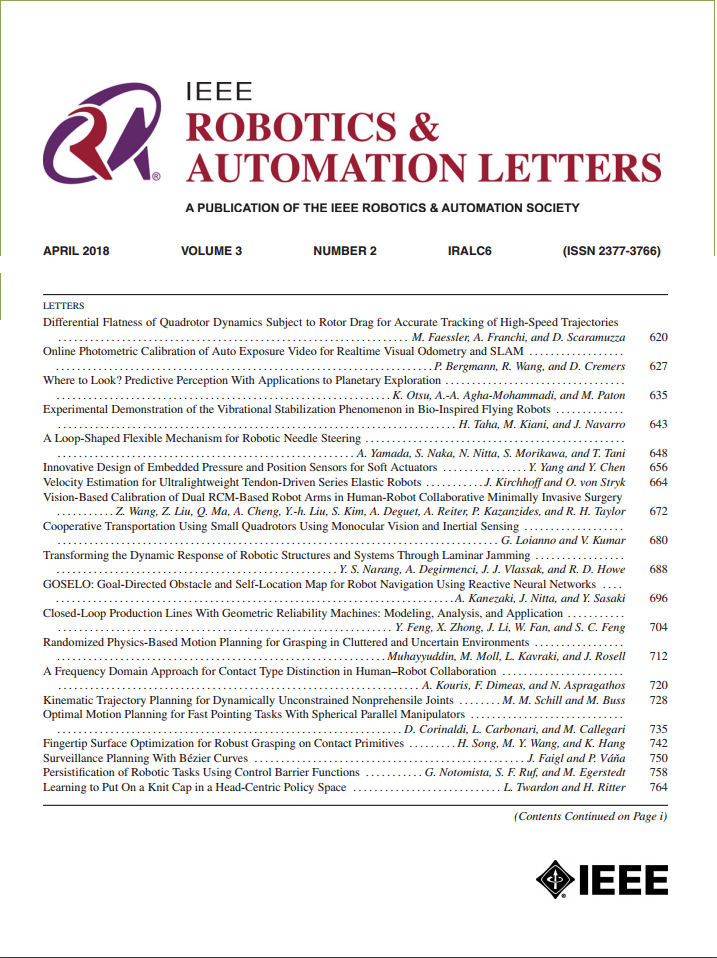MGPose:使用匹配引导的双通道注意的宽基线相对相机姿态估计
IF 5.3
2区 计算机科学
Q2 ROBOTICS
引用次数: 0
摘要
相对相机姿态估计是计算机视觉和机器人技术中的一项基本任务。在视觉重叠有限的宽基线场景中,传统方法通常表现不佳。现有的深度学习方法也受到不相关特征和图像对之间相对运动建模不足的阻碍,使得准确的姿态估计特别具有挑战性。在这封信中,我们提出了MGPose,一种使用匹配引导双通道注意力机制的相机相对姿势估计方法。对于宽基线图像对,MGPose通过特征匹配策略有效降低了不相关特征的干扰,利用相机运动先验知识捕获匹配点的相对运动特征,并采用双向通道交叉注意机制和通道自注意机制充分捕捉匹配点不同通道之间的相互作用,实现了图像对的高效特征融合。在Matterport3D和ScanNet上进行的大量实验表明,MGPose在相机相对姿态估计方面优于或匹配最先进的方法。本文章由计算机程序翻译,如有差异,请以英文原文为准。
MGPose: Wide-Baseline Relative Camera Pose Estimation Using Matching-Guided Dual Channel-Attention
Relative camera pose estimation is a fundamental task in computer vision and robotics. In wide-baseline scenarios with limited visual overlap, traditional methods often perform poorly. Existing deep learning approaches are also hindered by irrelevant features and insufficient modeling of the relative motion between image pairs, making accurate pose estimation particularly challenging. In this letter, we propose MGPose, a camera relative pose estimation method using a matching-guided dual-channel attention mechanism. For wide-baseline image pairs, MGPose effectively reduces interference from uncorrelated features through a feature matching strategy, utilizes camera motion prior knowledge to capture the relative motion characteristics of matched points, and employs a bidirectional channel cross-attention mechanism along with a channel self-attention mechanism to fully capture the interactions between different channels of matched points, enabling efficient feature fusion for the image pairs. Extensive experiments on Matterport3D and ScanNet show that MGPose outperforms or matches state-of-the-art methods in camera relative pose estimation.
求助全文
通过发布文献求助,成功后即可免费获取论文全文。
去求助
来源期刊

IEEE Robotics and Automation Letters
Computer Science-Computer Science Applications
CiteScore
9.60
自引率
15.40%
发文量
1428
期刊介绍:
The scope of this journal is to publish peer-reviewed articles that provide a timely and concise account of innovative research ideas and application results, reporting significant theoretical findings and application case studies in areas of robotics and automation.
 求助内容:
求助内容: 应助结果提醒方式:
应助结果提醒方式:


